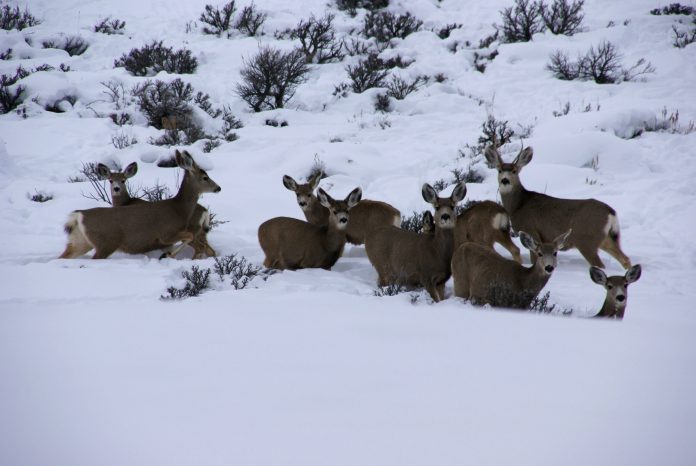Much of the West had a particularly harsh winter—and that was especially true in northwest Colorado, where big game populations suffered brutal winter mortality rates. In response, Colorado Parks & Wildlife (CPW) recently announced significant big game tag reductions in the state’s northwest region—an area that has historically included some of the best mule deer and elk hunting in the Centennial State.
According to CPW Big Game Manager Andy Holland, the agency made tweaks to tag quotas throughout the state but the most significant cuts were in the northwest, which had one of the harshest winters on record. CPW reduced tags for deer, elk, and pronghorn by 25,000 in the “severe winter zone” and by 32,000 statewide.

“To my knowledge, we’ve never had a 32,000 license reduction in any year—nor anywhere even close to it,” Holland said in an interview with Field & Stream. “The reason for such a large reduction is we’re talking about 3 elk herds, 3 deer herds, and 4 pronghorn herds. And they’re our largest and most productive herds. We’ve never done anything on this scale.”
CPW initially set hunting seasons in early March—but prolonged winter conditions impacted big game populations in the northwest in the months that followed, forcing the agency to make the recent cuts. The losses were particularly acute for elk populations. Cow elks had a 68 percent winter survival rate, while only 25 percent of calves made it through the winter. According to Holland, those fatality rates were “lower than we ever thought possible.”
The agency monitored the populations through GPS-collared animals and in-the-field observations. In addition to tag reductions, CPW also shortened the OTC elk seasons in a number of Big Game Units in the severe winter zone. “By making these reductions, we’re trying to get those herds back on an upward trajectory as fast as possible,” says Holland. “They will offset a lot of the mortality to some degree, but the problem is we lost most of our fawns and calves. That’s going to create a flag effect that will last several years.”
Read Next: Idaho Fish and Game Aims to Reduce Wolf Populations by 60 Percent Over the Next Six Years
Despite the cuts, Holland emphasizes that the fall hunting outlook is not so bleak everywhere. “For the rest of the state, it’s pretty much business as usual,” he says. “I want to make sure people don’t think it’s bad everywhere in Colorado. If you know other parts of the state [outside of the northwest section] or always wanted to try hunting somewhere different, this would be a good year to do that.”








